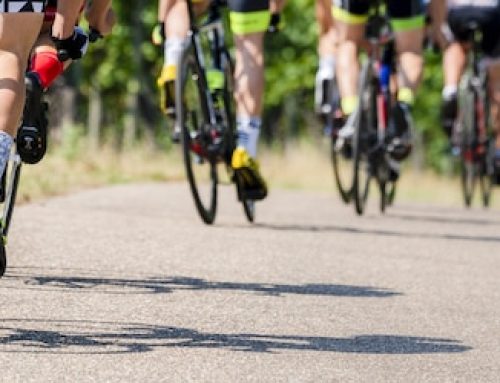The Impact of Cycling on Different Body Parts
Introduction
Cycling is one of the most popular forms of exercise and transportation. It has numerous health benefits such as improving cardiovascular health, reducing stress, and burning calories. However, many people are not aware of the different body parts that are affected by cycling. In this article, we will discuss the impact of cycling on different body parts.
Legs
The legs are the primary body parts that are affected by cycling. Cycling is a low-impact exercise that engages the muscles in your legs, including your quadriceps, hamstrings, and calves. Regular cycling helps to strengthen these muscles, improve endurance, and increase overall leg strength. According to a study by the University of California, cycling can burn up to 500 calories per hour, making it an effective way to tone and strengthen your legs.
Heart and Lungs
Cycling is an aerobic exercise, which means it raises your heart and breathing rates. The heart and lungs are the most important body parts affected by cycling. Regular cycling can improve your cardiorespiratory fitness, which reduces your risk of heart disease and stroke. According to the American Heart Association, cycling regularly for 30 minutes can lower your blood pressure and cholesterol levels.
Back and Core
Cycling requires you to maintain an upright posture, which engages your back and core muscles. These muscles are responsible for stabilizing your spine and maintaining good posture. Regular cycling can help to strengthen your back and core muscles, reducing your risk of back pain and improving overall posture. A study by the University of Basel found that cycling significantly reduced low back pain in participants.
Arms and Shoulders
While cycling primarily affects your legs, your arms and shoulders also get a workout. Cycling requires you to hold onto the handlebars, which engages your arms and shoulders. The amount of work your arms and shoulders get depends on the type of cycling you do. Mountain biking, for example, requires more upper body strength than road cycling. Regular cycling can help to tone and strengthen your arms and shoulders.
Knees
Cycling is a low-impact exercise, which means it puts less stress on your joints compared to other activities like running. However, cycling can still put some strain on your knees. The repetitive motion of pedaling can cause overuse injuries if you do not have proper form or bike fit. According to a study by the University of Salford, regular cycling with proper bike fit can reduce knee pain and improve overall knee health.
Hips
Cycling is a great way to improve hip mobility and flexibility. The pedaling motion engages your hip flexors, which can improve their range of motion. Regular cycling can also help to strengthen your glutes and hips, reducing your risk of hip pain and injury. A study by the University of North Carolina found that cycling improved hip strength and mobility in older adults.
Conclusion
In conclusion, cycling is a great way to improve your overall health and fitness. It affects different body parts in different ways, primarily engaging your legs, heart, and lungs. However, it also engages your back, core, arms, shoulders, knees, and hips. Regular cycling can improve your strength, endurance, and flexibility, reducing your risk of injury and improving your quality of life. So hop on your bike and start cycling today!
| Body Part | Impact of Cycling |
|---|---|
| Legs | Strengthens muscles, improves endurance, burns calories |
| Heart and Lungs | Improves cardiorespiratory fitness, reduces risk of heart disease and stroke |
| Back and Core | Reduces risk of back pain, improves posture |
| Arms and Shoulders | Tones and strengthens muscles |
| Knees | Can cause overuse injuries if proper form and bike fit are not practiced |
| Hips | Improves mobility, strengthens muscles, reduces risk of hip pain and injury |





